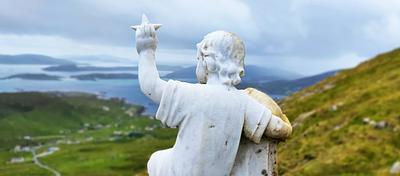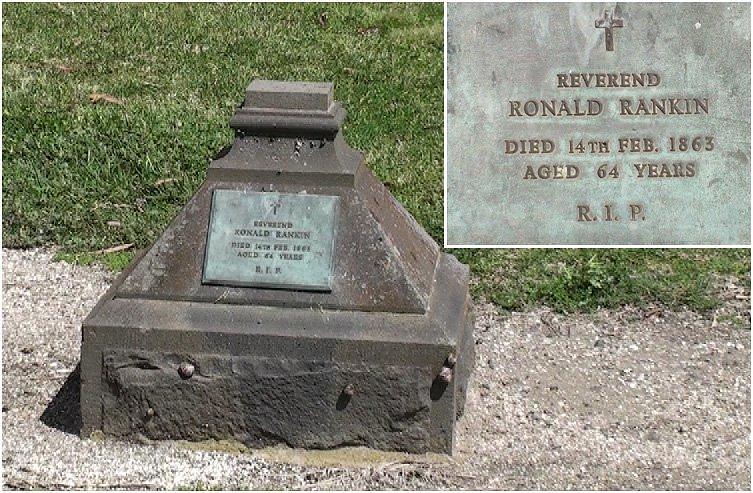
A Hebridean Christmas Tradition in the hymn ‘Taladh Chrìosda’
Frances Wilkins is a Lecturer in Ethnomusicology at the Elphinstone Institute, University of Aberdeen and a professional musician, who lives in Breakish on the Isle of Skye. As a field researcher, Frances specialises in Scottish and Northern Canadian singing and instrumental traditions. Her most recent research project, funded by the Carnegie Trust, explores the sacred song traditions of the West Highlands and Western Isles.
Emigration, whether forced or voluntary, by choice or necessity, has resulted in the composition of some of the most beautiful and moving Gaelic songs written over the centuries.
Examples such as ‘O Mo Dhuthaich’, ‘A’ Choille Gruamach’, and ‘Gu ma Slàn do na Fearaibh’, all express feelings of love, distance and longing associated with leaving, or being far from home. Taladh Chrìosda (Christ’s Lullaby), also known as ‘Mo Ghaol, Mo Ghradh’, ’Christ Child’, and by its originally title ‘Tàladh ar Slànair’, is one such composition which although not about emigration was written in response to it and carries all the hallmarks of a song composed amidst the tragedy of looming separation.
Mo ghaol, mo ghràdh is m’ eudail thu
M’ ionntas ùr is m’ aoibhneas thu
Mo mhacan àlainn, ceutach thu
Chan fhiù mi fhèin bhith ‘d dhàil.
Alleluia, Alleluia, Alleluia, Alleluia
Ged is leanabh dìblidh thu
‘S cinnteach rìgh nan rìghrean thu
‘S tu ‘n t-oighre dligheach fìrinneach
Air rìoghachd Dhè nan gràs.
Alleluia
Ged is rìgh na glòrach thu
Dhiùlt iad an taigh-òsta dhut
Ach chualas ainglean sòlasach
Toirt glòir don Tì as àird.
Alleluia
Taladh Chrìosda is perhaps the best known of all Gaelic lullabies and was composed in 1855 by Father Ronald (also known as Ranald) Rankin (1799-1863), a Catholic priest in Moidart, in advance of his emigration to Australia.
Originally with 29 verses, the song was a parting gift to the children of his congregation whom he was leaving behind. Many Catholic hymns are in praise of the Virgin Mary, but Taladh Chrìosda instead takes on her voice and perspective, and in the song she expresses her love, joy and awe in the presence of her son, the Christ Child, and her feeling of being blessed as the one chosen to nurse him.
Perhaps this was in some way also an expression of Father Rankin’s own paternal love towards the children he composed the song for.
Ronald Rankin was born in Fort William in 1799 and became a priest in Moidart until his emigration in 1855.
According to Liculle H. Campey in The Scottish Exodus to Canada, Fr Rankin ‘had been campaigning for greater emigration, believing it to be “the only probable means of preserving human life threatened by famine”’.
According to Campey, Rankin had seen that many of his parishioners ‘would cheerfully emigrate if there were anyone to lead them in whom they had confidence’, and with this in mind, he appointed himself as their leader, arranged their passages and emigrated with them to Australia.

He was among over 500 people from Moidart, around half of its population at the time, who boarded ships for Port Phillip (now Melbourne). This was at a time when many of Moidart’s population had already emigrated to Nova Scotia. On arrival in Australia, Rankin became a missionary in Little River, Victoria, and was eventually laid to rest in 1863 in the Eastern Cemetery in Geelong.
The hymn’s original melody was called ‘Cumha Mhic Àrois’ and was written down by Father Allan MacDonald in the late 1890s, and later by Margaret Fay Shaw in Folksongs and Folklore of South Uist in 1955.
It is likely to have been derived from the chorus of a waulking song, a version of which was recorded from Donald Matheson of Vatersay in 1953 (TAD ID 44387).
Marjory Kennedy-Fraser also published a scaled-down six-verse version of the song in 1909 with an English translation (‘The Christ Child’s Lullaby’) in Songs of the Hebrides Volume 1 but chose a different tune to accompany it – one that she had heard in Eriskay which she may have ‘improved’ to make more appealing to her target audience, although in essence it is very similar to the original tune and likely to be a variation of it.
Kennedy-Fraser’s interpretation of the song spread widely, as the first version appeared in print. She also gave a detailed (and, according to John Lorne Campbell, ‘quite fanciful’) re-telling of a legend from the islands of Eigg and Uist as to the origin of the song on the islands – quite different from the story or Rankin, and involving the appearance of the Virgin Mary to an orphan boy and his cruel stepmother. (Songs of the Hebrides Vol 1, p.28).
Perhaps the origins and sentiments coupled with two such memorable tunes, have made ‘Taladh Chrìosda’ a hugely popular Christmas hymn, one of the few that can be found within the Gaelic tradition.
In Barra, Eriskay and South Uist the song has become a central to the Midnight Mass on Christmas Eve.
It is interesting that many of the recordings on Tobar and Dualchais were made in November or December – perhaps a reflection of the significance of the hymn at that time, in the run up to the Christmas season.
Having this very specific seasonal role is reminiscent of other music associated with certain times of year – the fiddle tune ‘Da Day Dawn’, is another example, as it was played around the houses in Unst, Shetland, specifically on New Year’s Day.
My love, my treasured one are you,
My sweet and lovely son are you,
You are my love, my darling new,
Unworthy I of you.
Alleluia
Your mild and gentle eyes proclaim
The loving heart with which you came,
A tender, helpless tiny babe,
With boundless gifts of grace.
Alleluia
Lyrics © Kenna Campbell
There are many different versions of the song – in Gaelic, English (including the well-known version by Kenna Campbell) and Scots (by Karine Polwart).
These have been recorded over the years by some of the best-known traditional singers in Scotland, including Sheena Wellington, and in Canada, Ireland and further afield.
One of my personal favourites is the Scots/Gaelic version performed by Shine (Corrina Hewat, Alyth McCormack and Mary Macmaster) in Roslyn Chapel in q.
There are many different recordings of ‘Taladh Chrìosda’, from the 1950s up to the late twentieth century, to be found on the Tobar an Dualchais website.
Possibly one of the most prominent of the singers you will find in the collections is Nan MacKinnon (1903-1982) from Vatersay, who was recorded by numerous different fieldworkers from the School of Scottish Studies and features in over 1000 recordings on Tobar and Dualchais.
In November 1964 she was recorded by Anne Ross singing ‘Taladh Chrìosda’ (TAD ID 72570) which she learned from her mother, Mary, who was from the island of Mingulay. It is said of Nan that her ‘repertoire was among some of the most extensive and varied of her generation. […] She came from a rich musical tradition, and was said to know around 400 songs by heart, most of which she learned from her mother.’(TAD Person ID: 1864).
Another stunning version of the hymn, and mysterious in that there is so little information about the contributor, is sung by Mary MacDonald, from the village or Eoligarry on Barra (TAD ID 93125).
Her singing was recorded in December 1965 by Thorkild Knudsen, the Danish composer and ethnomusicologist.
Mary was one of a number of people to be recorded singing this song by Knudsen during the same trip that he made to Barra in November-December 1965, all demonstrating the popularity of the piece. Mary Morrison, Calum Johnston, Kate Buchanan, and Jane MacDonald, all from different parts of Barra, were recorded by Knudsen singing the hymn to its original tune, ‘Cumha Mhic Àrois’.
Interesting, when you listen to the field recordings made in South Uist and Benbecula, they are usually sung to the tune published by Marjory Kennedy Fraser in 1909.
Annie MacMillan from Benbecua (TAD ID 75243) and Angus MacKay, a crofter from Kilpheder in South Uist (TAD ID 38284) were both recorded by Calum Iain MacLean in the 1950s and demonstrate this in their singing.
Taladh Chrìosda is an incredibly versatile song, and has also been given the ‘Mod treatment’, with added harmonies, as can be heard in some of the later recordings including Tony Kearney and Amanda Millen’s version which they sang at the National Mòd in Glasgow in 1988 (TAD ID 92506).
Another later version, sung by Mary Anne Kennedy and Jo Miller and recorded by Margaret Bennett in 1989, brings in an instrumental piece in the song and demonstrates the two melodies side by side (TAD ID 80106).
The beauty of this hymn is that it is conjures up both the magic of Christmas and the tragedy of emigration.
A bitter-sweet song which has stood the test of time and continues to inspire and touch people in many corners of the world. In my own work as a folklorist interviewing and recording singers in the Western Isles, I came across many stunning Gaelic hymns, but this was a song I first discovered through exploring Gaelic hymns on Tobar an Dualchais and I was amazed by the sheer number of recordings spanning across time.
What really struck me was the way the song works in so many contexts and has been reinvented in so many ways, even today being so popular both in the sacred and secular domains.
While there are concerns that Gaelic hymn singing is in decline in churches, hopefully this piece and many others in the Gaelic hymn repertoire will continue to inspire people in the Western Isles and beyond for many years to come.